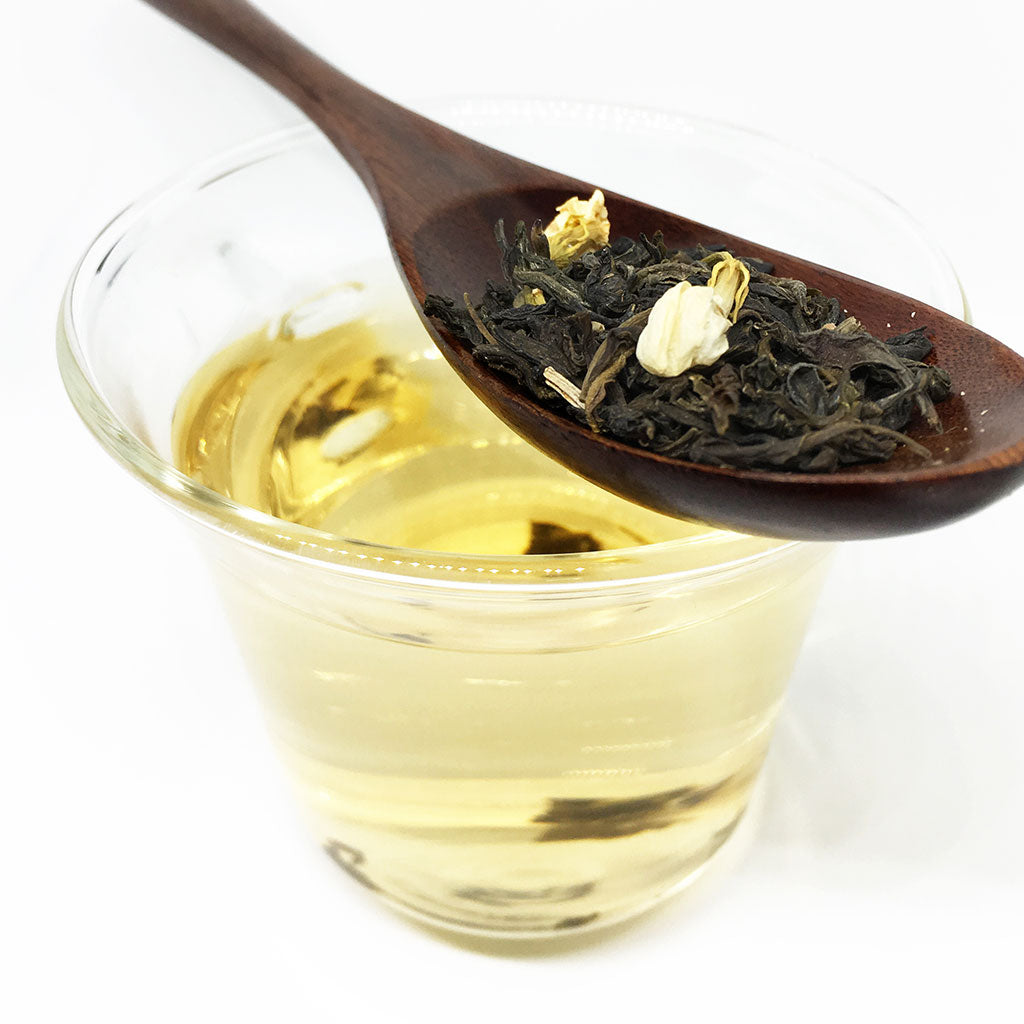How to Choose the Best Green Tea: A Quick Guide
Posted by JESSIE X

Green tea, with its myriad health benefits and delightful flavours, has gained immense popularity in recent years. Whether you're a seasoned green tea enthusiast or a newbie looking to explore this world of tea, choosing the best green tea can be a daunting task.
With countless options available, it's essential to understand what makes one green tea better than another.
In this quick guide, we'll walk you through the factors to consider when selecting the best green tea, whether you prefer loose-leaf tea or tea bags, and how to ensure you get the highest quality and most authentic green tea.
Why Choose Green Tea?
Before we dive into the details of selecting the best green tea, let's remind ourselves of the many reasons why green tea is a popular choice among tea drinkers:
- Health Benefits: Green tea is renowned for its potential health benefits. It is loaded with antioxidants called catechins, which are known to have various positive effects on health. These include potential weight loss support, improved brain function, and reduced risk of heart disease and certain types of cancer.
- Light and Refreshing: Green tea offers a fresh and light flavour that appeals to many. It's a great alternative to coffee or black tea for those looking for a milder taste.
- Low in Caffeine: If you're sensitive to caffeine, green tea is an excellent choice. It contains less caffeine than black tea or coffee, making it a suitable option for all-day sipping.
- Variety: There are numerous types of green teas available, each with its unique flavour profile. From Japanese green tea to Chinese green tea, you can explore a wide range of tastes.
Factors to Consider When Choosing Green Tea
Now that we've established why green tea is worth your attention, let's delve into the factors you should consider when selecting the best green tea for your palate and preferences.
1. Type of Green Tea
Green tea comes in various types, each with distinct flavours and characteristics. Some popular types include:
- Japanese Green Tea: Known for its umami flavour, Japanese green teas like Sencha and Matcha are steamed to preserve their vibrant green colour and fresh taste.
- Chinese Green Tea: Chinese green teas like Longjing (Dragonwell) and Gunpowder are pan-fired, resulting in a nuttier flavour profile.
- Whole Leaf Green Tea: Whole-leaf teas typically offer a richer and more complex taste compared to broken-leaf teas. Look for whole-leaf options for a fuller experience.
2. Loose Leaf vs. Tea Bags
The choice between loose-leaf green tea and tea bags often comes down to convenience and personal preference. Here are some considerations for each:
Loose Leaf Green Tea:
- Provides a more authentic tea-drinking experience.
- Allows you to control the tea's strength and flavour by adjusting the number of tea leaves used.
- Generally offers higher quality, as whole leaves are often used.
Tea Bags:
- Convenient for on-the-go or at work.
- Quick and easy to brew.
- Some high-quality green teas are available in tea bag form.
3. Quality Matters
When it comes to green tea, quality is paramount. To ensure you're getting the best quality green tea, pay attention to the following:
- Freshness: Look for teas with a recent harvest date. Fresher teas tend to have a more vibrant flavour.
- Color: High-quality green tea should have a vibrant green colour, indicating that it's been processed well and stored properly.
- Aroma: The aroma of the tea leaves should be fresh and inviting. Avoid teas with a stale or musty scent.
- Leaf Appearance: Whole, unbroken leaves are a sign of better quality. Avoid teas with a lot of broken or crushed leaves.
4. Organic and Certified Options
If you prefer to go the organic route, consider certified organic green tea. Organic teas are grown without synthetic pesticides or fertilizers, making them a healthier and more environmentally friendly choice.
5. Flavor Profile
Consider the flavour profile you prefer. Do you like a grassy, vegetal taste, or do you prefer a more nutty or sweet flavour? Reading tea descriptions or asking for recommendations at a tea shop can help you find green teas that match your taste preferences.
6. Brewing Method
How you brew your green tea can greatly affect its taste. To get the best flavour, use freshly boiled water that has cooled slightly (about 175-185°F or 80-85°C). Steeping times vary by type, so follow the instructions on the packaging or seek guidance from a knowledgeable source.
7. Health Benefits
If you're specifically interested in the potential health benefits of green tea, such as supporting weight loss or improving overall well-being, it's important to choose high-quality, fresh green tea. While green tea has many health benefits, the quality of the tea can impact its effectiveness.
8. Price
Finally, consider your budget. While there are premium green teas available, there are also excellent options at more affordable price points. Don't assume that a higher price always equals better quality; it's essential to balance quality with your budget.
Where to Buy Green Tea
Now that you know what to look for when choosing the best green tea, let's explore where you can buy it:
- Local Tea Shops: Visiting a speciality tea shop allows you to interact with knowledgeable staff who can provide recommendations based on your preferences. You can also smell and sometimes taste different teas before making a purchase.
- Online Retailers: Many online retailers offer a wide selection of green teas, and you can read reviews and product descriptions to make informed choices. Just be sure to buy from reputable sources like us!
- Farmer's Markets: Some farmer's markets feature local tea vendors who may offer fresh, unique green teas.
- Asian Grocery Stores: If you're lucky enough to have access to an Asian grocery store, you'll likely find a variety of green teas, including Japanese and Chinese options.
Brewing and Enjoying Your Green Tea
Once you've selected the best green tea for your preferences, it's time to brew and enjoy it. Here's a simple guide to brewing green tea:
Ingredients:
- High-quality green tea leaves
- Freshly boiled water (cooled slightly to 175-185°F or 80-85°C)
Instructions:
- Measure the tea leaves: For loose-leaf green tea, use about one teaspoon of tea leaves per cup (8 ounces) of water. Adjust the amount based on your taste preference.
- Add the tea leaves to the preheated teapot or teacup.
- Pour hot water over the tea leaves. Use the recommended temperature for your specific green tea variety.
- Steep the tea for the recommended time, usually 1-3 minutes, depending on the type of green tea. Steeping too long can result in bitterness.
- Strain the tea into your teacup, removing the tea leaves. If you're using a tea bag, simply remove the tea bag after steeping.
- Enjoy your green tea plain or with a touch of honey or lemon for added flavour.
Conclusion
Choosing the best green tea doesn't have to be an overwhelming task. By considering factors like the type of green tea, your brewing preferences, and the quality of the tea, you can find a green tea that suits your taste and provides potential health benefits. Whether you opt for Japanese green tea, Chinese green tea, or any other variety, the key is to explore, experiment, and enjoy the journey of discovering the world of green tea. So, go ahead and savour your cup of green tea – it's a delightful and healthful experience waiting for you.
SHARE:

AUSTRALIA'S FINEST LOOSE LEAF TEAS
Explore Australia's largest selection of Premium Teas & All-Natural Organic Herbal Blends.


